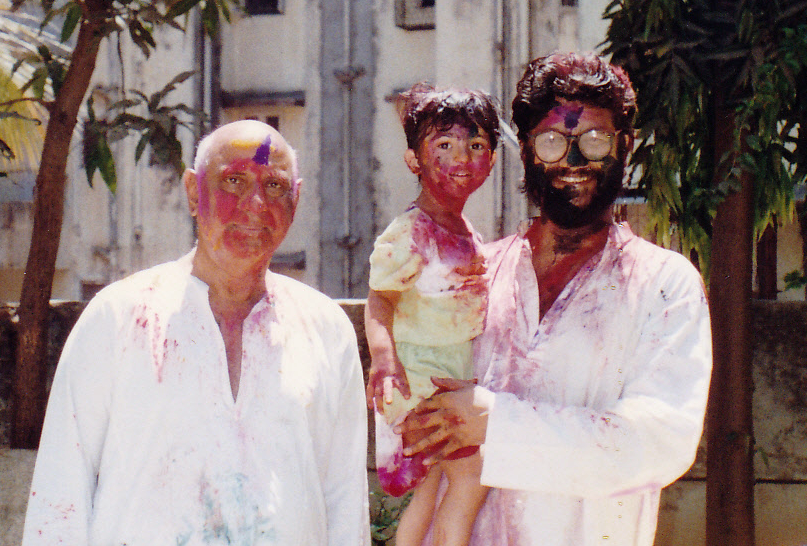By Jai Thade, Content Designer
Holi has two stages of celebration:
- The Holika Dahan – a ritual bonfire around which people gather, perform rituals and pray.
- The Rangwali Holi – a free-for-all where people smear each other with coloured powder, drench each other with water, sing, dance, eat, drink and make merry. Then in the evening, individuals clean up and go visit friends and family.
Most references to Holi refer to the latter, which is celebrated with much gusto. I have countless childhood memories of water-balloons and water-blasters, and enough stories of mischief and mayhem to fill an entire book!
What I like most about Holi (aside from laying water & colour traps for the unsuspecting) is being with everybody and feeling like I’m parting of something bigger than just the details of my self-contained, tiny little life.

An invitation to celebrate is an invitation to share happiness. Happiness catalyzes bonds, and bonds are what lead to a feeling of truly belonging and being included.
Celebration also cuts through the formality of corporate culture, allowing you to connect with people on a personal level and see their more personal sides. Seeing people come to the office the next day with patches of difficult-to-remove colour still around their ears and at the back of their necks becomes the starting point of a conversation that’s sure to put a smile on the faces of everyone involved.
Celebrating together also helps you see other people and cultures at their happiest and most welcoming. It’s a participative way of learning about other people, and one that is far-removed from solemn observation and analysis.
There is some compelling scientific evidence underlying the benefits of moving, singing and dancing together that celebrations across cultures entail.
For instance, researchers Scott Wiltermuth and Chip Heath conducted an interesting study at Stanford Business School. The study had two parts – the first involved bringing people into a lab and making them sing and move in unison to a song they had no prior emotional attachment to (“O Canada”, in case you’re wondering). Some were made to sing and move in unison, while others were not.
After this, they were made to play games and solve dilemmas, both of which required cooperation. What they found was that those who moved in synchrony were able to outperform those who did not, especially in games requiring extreme cooperation.
Other research has also indicated that this kind of rhythmic coordination can actually affect how well we cooperate with one another, as well as how we feel about ourselves and others.
It seems that the very act of moving together in time seems to have had an impact on cooperation & trust – something that is of great relevance in the business world.
Organizations can leverage the power of celebration, as well as the components of such celebratory activities to engineer ways to drive belongingness and inclusion. For instance, by creaming small rituals and games that involve music and dance.
To conclude this discussion, I’d like to share another powerful example of the power of celebration to cut through differences. During World War 1, an extraordinary event occurred on Christmas eve. Warring German & British troops both called for a temporary truce for Christmas. Where only a day ago the air rang with gunfire, bombings, screams, and sirens, now rang the sound of Christmas carols. Troops shared Christmas dinners with each other and even played football (soccer match) using a makeshift ball made of bundles of straw.
Sometimes fact truly can be stranger than fiction, and the smallest things can sometimes be the most powerful.
Sources:
https://journals.sagepub.com/doi/10.1111/j.1467-9280.2008.02253.x
https://www.frontiersin.org/articles/10.3389/fpsyg.2016.01983/full
https://www.history.com/topics/world-war-i/christmas-truce-of-1914






